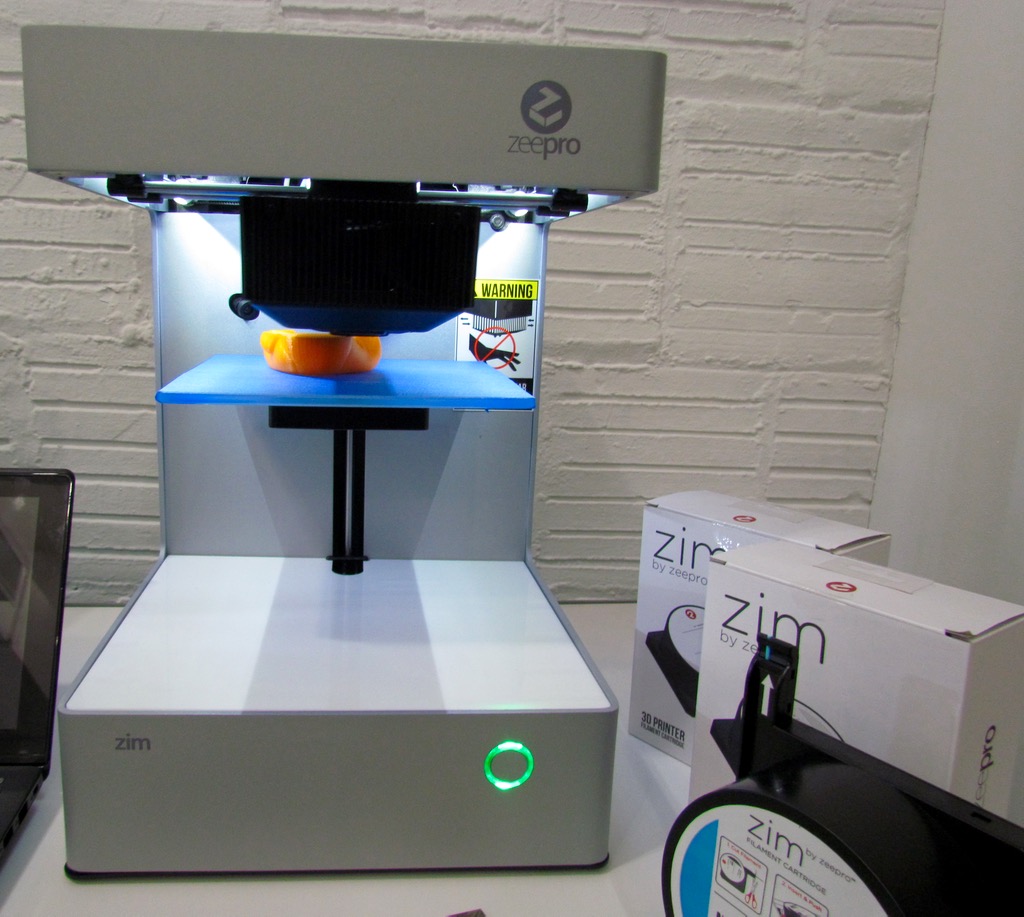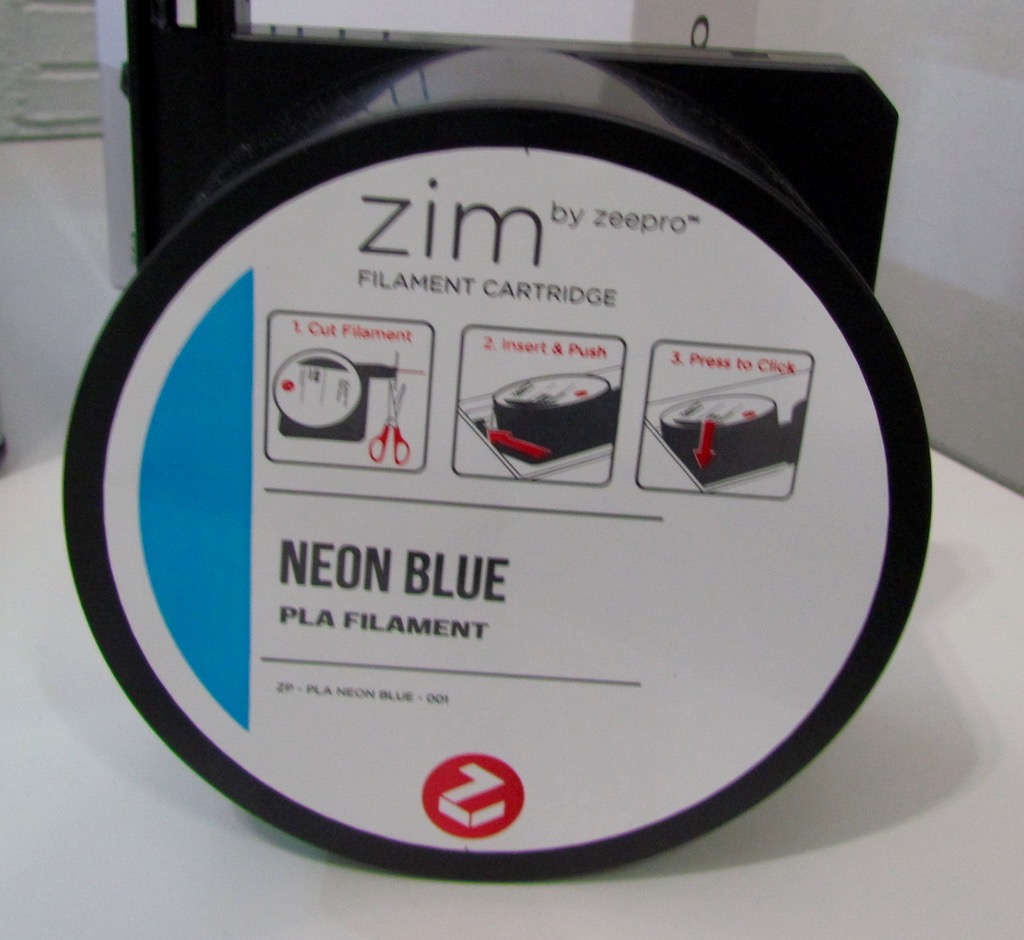Zeepro is taking a very consumer-oriented approach to their 3D printer offering.
The company markets the Zim, a filament extrusion-based 3D printer with technical specifications that are not terribly different from many competitors.
But San Francisco-based Zeepro is not competing on hardware specifications with this device. Instead, they’re attempting to produce a machine that should be as easy as possible to use by almost any consumer. In fact, they’re positioning it as a “home entertainment” device.
A key element in their business model is pricing: the Zim is priced at only USD$359 for a single extruder version (there’s a big increase to get the dual extruder version, priced at USD$1,299 that will eventually be released).
One way the price is kept low is Zeepro’s software approach: the printer management software is entirely cloud-based as the Zim connects to the Internet directly. You’ll use a web interface or mobile view to control the Zim. This has several advantages to both customer and Zeepro.
As a cloud system, the software is always up to date and all customers are using the same version. Other companies struggle to maintain consistency among their users, but this will not be the case for the Zim community. We’re told Zeepro tends to update on two-week intervals.
The cloud system permits more hardware to be used efficiently to slice 3D models faster and more reliably than can sometimes be done on personal computing equipment. In the case of Zeepro, their target market is unlikely to have powerful PCs at their disposal.
Zeepro has been selling the Zim in quantity since January and is proud of the fact that they, among all the ultra-low priced 3D printer options, were able to successfully deliver the goods. This could be due to a greater degree of control over the hardware: the design is entirely their own.
One twist that may aggravate DIY 3D printer operators is Zim’s requirement for proprietary filament cartridges, shown here. These are priced at USD$25 per 270g, so they could be considered expensive as compared to “open material” options. However, the DIY’ers are definitely not Zeepro’s target market. Zeepro focuses solely on general consumers who actually will pay a premium for products that work, given their typical lack of technical skills. The Zim’s cartridge system, for example, will ensure the correct color is loaded and that there is sufficient material to complete the next print job.
If you’re a non-technical consumer, you might consider the Zim as personal 3D printer option. If so, you must choose either black or white cases.
Via Zeepro



